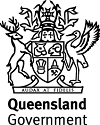Published Wednesday, 12 September, 2018 at 05:02 PM

Minister for Environment and the Great Barrier Reef, Minister for Science and Minister for the Arts
The Honourable Leeanne Enoch
Queensland Indigenous climate innovation goes global
The traditional cultural and ecological practices used by Indigenous communities in Queensland to address climate change has been showcased at the Governor’s Climate and Forest Task Force Annual Meeting in California.
Environment Minister Leeanne Enoch, who is in the US for the meeting, said fire management techniques used by First Nations people, which have been used for thousands of years to protect savanna areas, drastically reduce emissions caused by grassland wildfires.
“While burning is used in land management to some extent across the world, Queensland’s Indigenous communities are world leaders in managing their own emissions reduction projects,” Ms Enoch said.
“Aside from environmental and economic benefits, savanna burning also creates jobs in remote communities, increases biodiversity, supports First Nations people on Country and improves food security and health.
“The Palaszczuk Government is working closely with Aboriginal communities to empower Traditional Owners to use their traditional knowledge to protect the environment and reduce emissions through savanna burning.
“While wildfires are predicted to increase with a changing climate, these savanna burning techniques are the way forward to mitigate risk.”
Ms Enoch said almost 40 Queensland savanna burning projects had already been established through the Australian Government’s Emissions Reduction Fund, under which savanna burning can earn carbon credits.
“So far, these projects have abated 1.6 million tonnes of carbon, worth more than $19 million,” she said.
Ms Enoch added that through the Palaszczuk Government’s CarbonPlus Fund, core-benefit standards were being developed using an innovative ‘Indigenous to Indigenous’ verification framework to valuate and verify the cultural, social and environmental benefits generated through savanna burning.
“By empowering Traditional Owners to lead and manage their own carbon projects using traditional land-management practices, we’re creating a sustainable and valuable industry in Queensland.”
[ENDS]
Media contact: 0437 859 987
Additional background:
Queensland’s climate change response
In 2017, Queensland released the Queensland Climate Transition Strategy and the Queensland Climate Adaptation Strategy. The transition strategy includes three key climate change commitments:
- Powering Queensland with 50 per cent renewable energy by 2030
- Achieving zero net emissions by 2050
- Reducing carbon pollution by setting an interim emissions reduction target of at least 30 per cent below 2005 levels by 2030
Savanna burning in Queensland
Aboriginal-managed savanna burning projects reduce emissions while supporting capacity building by valuing traditional land management techniques. More than 50 per cent of all Australian savanna burning projects (39) are located in Queensland. To date, these projects have abated 1.6 million tonnes of carbon and generated over $19 million.
CarbonPlus Fund
The $8.4 million CarbonPlus Fund was developed to help build a sustainable Aboriginal carbon farming industry in Queensland. The fund supports the development of core-benefit standards, which use ‘Indigenous to Indigenous’ verification to valuate and verify additional cultural, social and environmental benefits generated through carbon farming projects in Aboriginal communities.
The Land Restoration Fund
The $500 million Land Restoration Fund will grow carbon farming in Queensland by facilitating a pipeline of land-sector carbon farming projects that deliver additional social, cultural, environmental and economic co-benefits.
The Land Restoration Fund will offer premium carbon credits – which are standard carbon credits packaged together with certified social, economic, environmental or cultural benefits – to encourage buyers to make an impact beyond merely cutting their carbon emissions.
Indigenous Land and Sea Ranger Program
The Palaszczuk Government collaborates with Indigenous communities to employ and train Indigenous Land and Sea rangers in 23 regional and remote locations. The rangers are Aboriginal Traditional Owners of the country on which they work, and deliver conservation services that successfully combine methods drawn from both traditional knowledge and western science.

